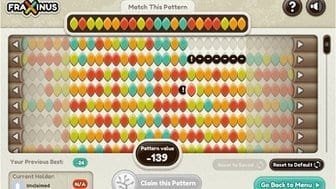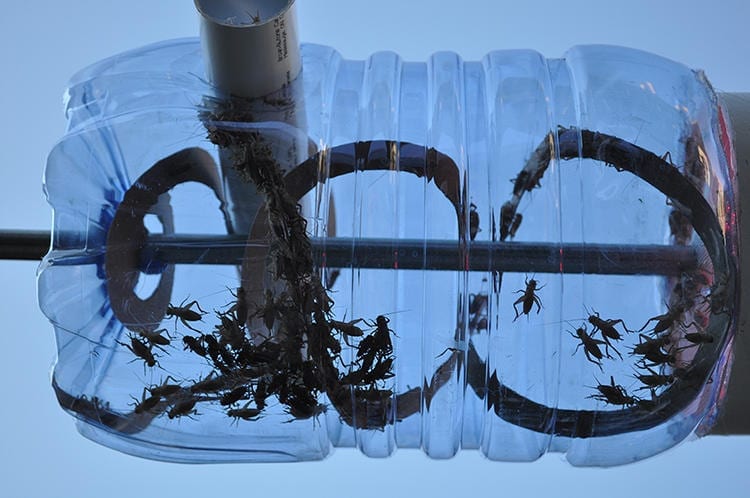
The public are being asked to help in the fight against ash dieback by playing a computer game that analyses genetic data on the disease.
The Facebook game aims to use the power of social media to find a scientific solution to protecting ash trees from the Chalara fraxinea fungus.
Many of the UK’s 80m ash trees are threatened by ash dieback.
Scientists believe some trees may have natural immunity to Chalara and could be used to grow resistant forests.
They hope to identify potential woodland survivors by studying the genetics of British ash trees.
They are also looking at the genetics of the fungus to find out more about how it spreads.
‘Fun and engrossing’
Dr Joan Webber is principal pathologist and head of the tree health research group at the government agency Forest Research.
“And the reason we want to have more information about that is simply looking for resistance – looking for resistant individuals or the genes around resistance to Chalara in our ash trees.”
The Fraxinus game, launched to the public on Tuesday, challenges players to match sequences of genetic “letters” represented by coloured leaf shapes.
This sorts genetic information into matching sequences and pinpoints genetic variation in the tree or the fungus.
Experts hope it will give clues to the origins of the disease, and help identify the best ash trees to grow in the future.
Dr Dan MacLean, of the John Innes Centre in Norwich, is the scientist who came up with the idea.
He told BBC News: “Primarily we designed the game to be fun and engrossing in and of itself.
“That’s where the basic value is for the player – how we get the most out of it is if people want to come back to it and play it with their friends. That it’s for a good cause is a bonus.”
Prof Allan Downie, also of the John Innes Centre, said the aim was to harness “people power” to get cumulative information.
“By getting people in, by matching patterns, we might be able to identify what the diversity is of the different individual fungi that are causing this disease,” he said.
The Latest Bing News on:
Ash dieback
- Infected trees alongside major road to be cut downon May 1, 2024 at 10:18 pm
Infected trees will be cut down along a major road so they do not pose a risk to drivers. Cumberland Council said it would cut trees on the A595 after several instances of ash dieback were discovered.
- Mixed farmer reaction to ash dieback packageon May 1, 2024 at 5:20 pm
The new Climate Action Performance Payment of €5,000/ha is being paid to plantation owners who have joined the Department of Agriculture’s ash dieback reconstitution schemes.
- Forestry service costs surgeon May 1, 2024 at 3:18 pm
The ballooning cost of administration in the Department of Agriculture’s forestry division, coupled with the huge decline in planting highlights how Department spending can get out of hand very ...
- Ash dieback scheme a ‘step in right direction’ but questions remain - Sinn Féinon May 1, 2024 at 9:23 am
Additional supports for farmers and forestry owners affected by ash dieback is a step in the right direction, Claire Kerrane has said.
- Rooting out the Ash Dieback problems on A595 in Cumbriaon May 1, 2024 at 2:40 am
Felling and maintenance of the trees along the main road will take place to treat the disease. | ITV News Border ...
- Cabinet approves €79m ash dieback schemeon April 30, 2024 at 7:38 am
The Government is set to approve a €79.5 million package for farmers and landowners whose forests have been impacted by ash dieback.
- €79.5m support package for ash-dieback approvedon April 30, 2024 at 6:48 am
An action plan to provide additional supports for farmers with forestry impacted by ash dieback disease has been approved by the government today.
- €79.5m ash dieback package for farmers approvedon April 30, 2024 at 5:42 am
This payment will be made available to all ash forest owners who have or will fully engage with the Department of Agriculture's ash dieback schemes.
- 'The damage is evident' - growers keen to avail of ash dieback schemeon April 30, 2024 at 1:45 am
A woman who planted ash trees on her farm in Tipperary back in 1996 has said just 2% of her crop are resistant to ash dieback disease, with farmers and growers having waited years to avail of a scheme ...
- €79.5m extra funding for ash-dieback planon April 29, 2024 at 6:30 pm
A plan to help farmers who have forestry affected by ash dieback is expected to be brought before Cabinet for approval today.
The Latest Google Headlines on:
Ash dieback
[google_news title=”” keyword=”ash dieback” num_posts=”10″ blurb_length=”0″ show_thumb=”left”]
The Latest Bing News on:
Protecting ash trees
- Conservationists aim to save dying forests by chopping down trees: 'These are just the first steps'on May 2, 2024 at 4:00 am
Already, the conservation society is seeing success. Conservationists aim to save dying forests by chopping down trees: 'These are just the first steps' first appeared on The Cool Down.
- UVa student protest remains subdued in its second dayon May 1, 2024 at 4:30 pm
A student-led protest at the University of Virginia remained peaceful as it entered its second day Wednesday, standing in stark contrast to how similar anti-Israel protests have unfolded across the ...
- Here's why 'hundreds' of maple seedlings are taking over gardens across CTon April 30, 2024 at 5:00 pm
Emerald ash borers were discovered in the state ... 2018,” the state Department of Energy and Environmental Protection said on its website. “By summer 2018, the leaves on many oak trees began to turn ...
- Albert Lea Noon Lions Club donates shade trees to local third-grade studentson April 30, 2024 at 7:56 am
Members of the Albert Lea Noon Lions Club on Monday visited Albert Lea elementary schools to donate shade tree saplings to third-grade students. It was a day filled with happy faces of students, ...
- Arbor Day: Foresters across government levels encourage tree plantingon April 30, 2024 at 3:07 am
Foresters in Oneida County celebrated Arbor Day by planting trees at the Chequamegon Nicolet National Headquarters.The trees replaced ones that had died from Emerald Ash Borer.
- Arbor Day 2024: How to plant the best tree to combat climate changeon April 26, 2024 at 7:39 am
The first official Arbor Day was celebrated on April 10, 1872, when prizes were offered to communities and individuals who could plant the most trees in a single day.
- Arbor Day serves as reminder of importance of treeson April 26, 2024 at 6:50 am
BRAINERD — Trees cool cities, reduce pollution, help ensure clean drinking water and provide oxygen. And on this Arbor Day, it’s a good time to remember the importance trees play in communities across ...
- Rutland Herald Community Newson April 25, 2024 at 8:00 pm
RUTLAND — Osher Lifelong Learning Institute presents “History of the Vermont CCC Camps” lecture by author and historian Marty Podskoch. The lecture will be held Friday, May 3, at 1:30 p.m. at the ...
- On the hunt for Missouri's Champion Trees, the biggest and oldest of their kindon April 25, 2024 at 2:15 pm
Information on potential new state champion trees comes voluntarily from the public as well as state foresters who happen to notice candidates for the honor.
- Here's how Washington County cities are tackling the invasive emerald ash borer problemon April 24, 2024 at 7:45 pm
The beetle was first detected in Forest Grove back in June of 2022. Since then they've killed at least 200 ash trees locally.
The Latest Google Headlines on:
Protecting ash trees
[google_news title=”” keyword=”protecting ash trees” num_posts=”10″ blurb_length=”0″ show_thumb=”left”]










